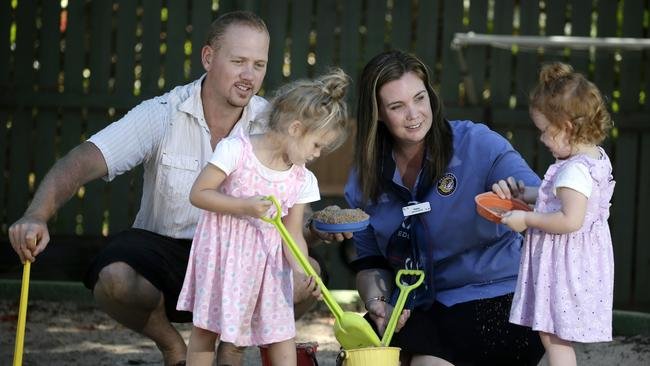Centrelink child care subsidy 2025 : Centrelink child care subsidy eligibility
The Centrelink Child Care Subsidy (CCS) is a vital support program provided by the Australian government to help families manage the rising costs of child care. In 2025, this subsidy continues to provide significant financial assistance to families, allowing them to access affordable child care services. However, to benefit from this subsidy, families need to meet certain eligibility criteria.
The Centrelink Child Care Subsidy continues to be a critical financial support system for families in 2025. By understanding the eligibility criteria and staying updated on any changes, families can make the most of this valuable assistance to manage the cost of child care. Whether you’re a working parent, a student, or involved in other activities, the subsidy can significantly ease the burden of child care costs. To find out more or to apply, visit the official Centrelink website and get started on your application today
What is the Centrelink Child Care Subsidy?
The Centrelink Child Care Subsidy is a financial assistance program aimed at reducing the cost of child care for eligible families. It covers a percentage of child care fees, depending on factors like family income, activity level (work or study), and the type of child care services used.
Eligibility Criteria for the Centrelink Child Care Subsidy in 2025
To qualify for the Child Care Subsidy in 2025, several factors are taken into account. Below are the key eligibility requirements as outlined on the official Centrelink website:
1. Residency Requirements
- You must be an Australian citizen, a permanent resident, or a holder of a temporary visa (if you meet the necessary residency requirements). Families who do not meet these requirements may not be eligible for the CCS.
2. Family Income
- The amount of subsidy a family can receive is directly related to their income. Families with a lower income typically receive a higher subsidy. The government applies a sliding scale, where the subsidy decreases as family income increases. The maximum rate of subsidy is available for families earning less than $70,015 annually, with subsidies gradually reducing as income rises.
- You will need to provide information about your family’s income, including any income support payments you may receive, to determine eligibility.
3. Child Care Activity Requirements
- The subsidy is available to families who engage in certain types of activity. This includes working, studying, volunteering, or looking for work. To be eligible, parents or guardians must be undertaking a certain number of hours of these activities per fortnight.
- For example, parents who work 8 hours a week will be entitled to a reduced subsidy compared to parents who work full-time. The activity test determines how much subsidized care a family is entitled to, and it varies depending on the number of hours worked or studied.
4. Approved Child Care Providers
- Families must use child care services that are registered with the government and approved for subsidy payments. This includes long day care, family day care, outside school hours care, and vacation care, among others. It’s important to ensure that the child care provider you choose is approved by the government, or you will not be eligible for the subsidy.
5. Age of the Child
- The child receiving care must be under 13 years old, although special conditions apply if the child has a disability. Parents need to ensure the child is eligible under these guidelines to receive the subsidy.
6. Child’s Immunization Status
- In 2025, it is still necessary for children to be up to date with their immunizations in order to receive the subsidy. Families must provide proof of their child’s immunization status or medical exemptions. Failure to meet immunization requirements can lead to the reduction or loss of the subsidy.
How Much Subsidy Can You Receive?
The amount of subsidy you can claim depends on three main factors:
- Family Income: Families with lower incomes receive a higher percentage of their child care fees subsidized, while higher-income families receive a lower percentage.
- Activity Level: The more hours you work, study, or volunteer, the more subsidy you may be eligible for.
- Type of Child Care: The rate of subsidy can also depend on the type of child care you use.
The maximum rate of subsidy is 90% of the child care fee, and the subsidy decreases as your income increases. The government has set annual income caps, with the highest subsidy available for families earning less than $70,015 per year.
How to Apply for the Child Care Subsidy
To apply for the Child Care Subsidy, families can follow these steps:
- Create a myGov Account: You’ll need a myGov account linked to Centrelink in order to apply for the subsidy.
- Submit Your Application: Once you have linked your myGov account to Centrelink, you can submit an application for the subsidy. This will require details about your family’s income, your child’s immunization status, and your child care provider.
- Provide Supporting Documentation: You may need to provide documents like proof of income, immunization records, and activity levels.
- Wait for Assessment: Centrelink will assess your eligibility based on the information provided. Once your application is processed, you will be notified of the subsidy amount you’re eligible for.
- Ensure Your Provider is Approved: After your application is approved, ensure your child care provider is registered with the government to receive payments.
Important Considerations
- Changes in Circumstances: You must inform Centrelink of any changes in your income, activity levels, or family circumstances. Failing to do so may result in overpayments, which will need to be repaid.
- Annual Reassessment: Eligibility for the subsidy is reviewed annually, so make sure to update your information when required.
- Payment and Billing: Subsidy payments are made directly to the child care provider, reducing the amount that parents need to pay out of pocket.

